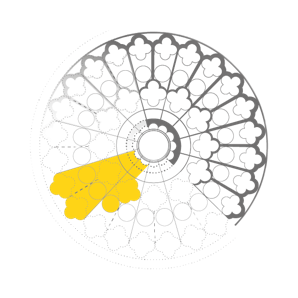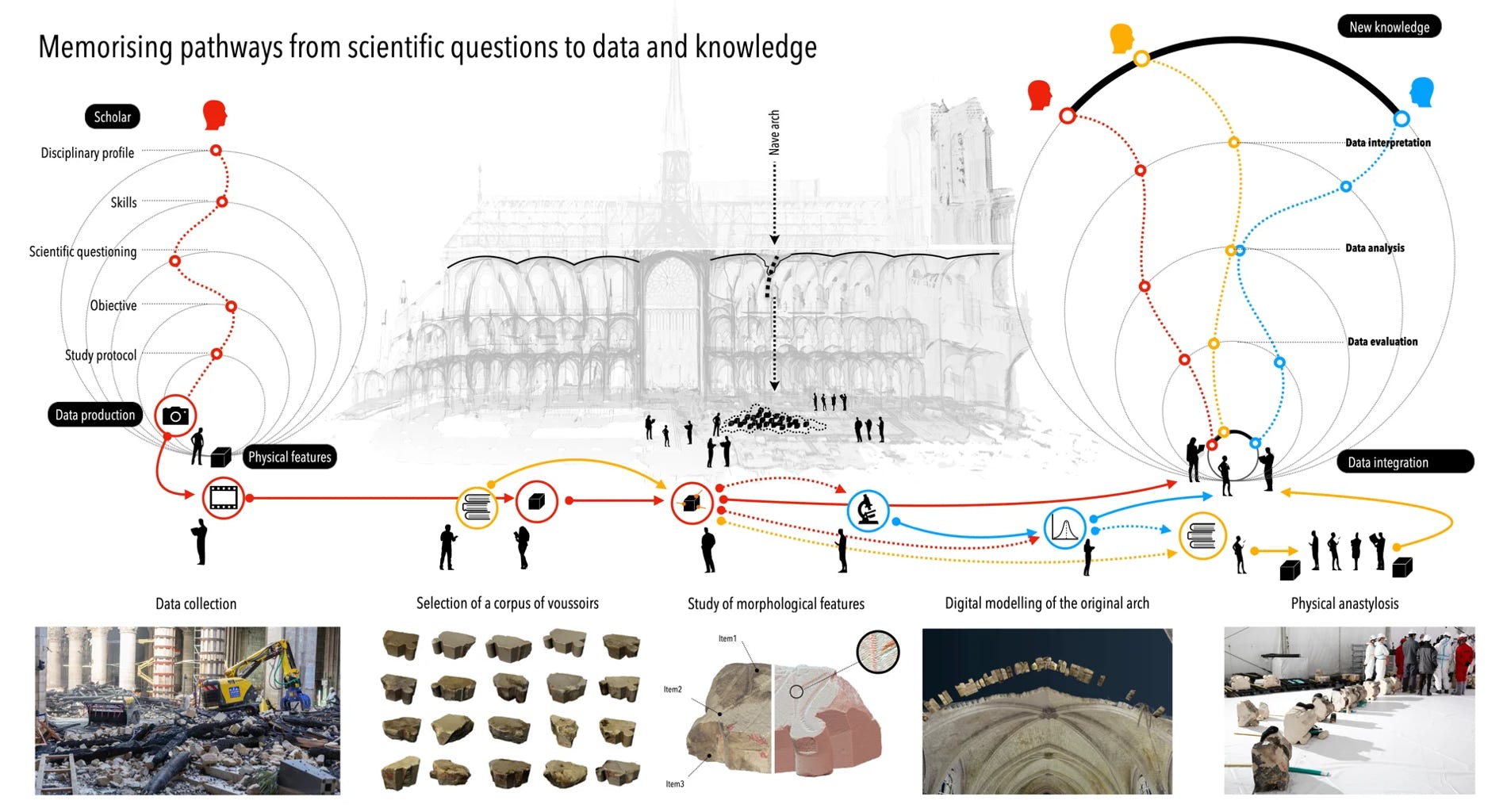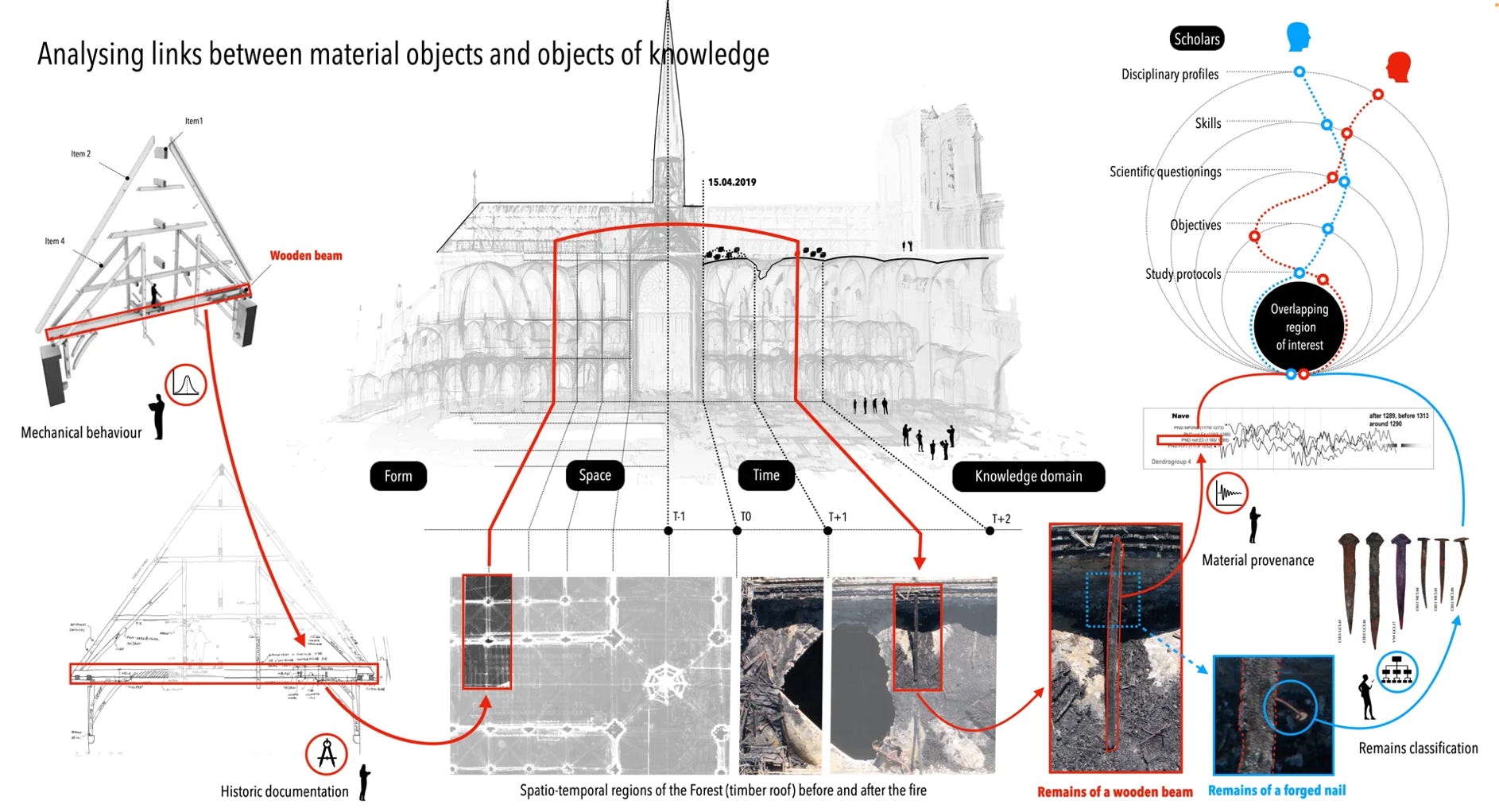

n-Dame_Heritage
n-Dimensional analysis and memorisation ecosystem
for building cathedrals of knowledge in Heritage Science


n-Dame_Heritage
n-Dimensional analysis and memorisation ecosystem
for building cathedrals of knowledge in Heritage Science
project
With the dual aim of memorising and analysing the plurality of perspectives on the same cultural heritage object, this project fuses state-of-the-art methods in conceptual modelling and digitisation with different branches of digital humanities and computer science for the development of a collective knowledge system, a digital ecosystem to unlock a value layer that is both rich in human participation and driven by well-structured information.
Scientifically, we aim to introduce approaches for correlating multidimensional data that enable the synthesis, structuring, and interpretation of an expansive array of scientific resources. We focus on four fundamental dimensions: space, shape, time, and knowledge domains. These are examined through geometrical-visual representation, shape annotation and classification, temporal tracking, and an investigation of thematic and disciplinary intersections.
Methodologically, we are committed to documenting and deciphering multidisciplinary scientific approaches, shedding light on how diverse stakeholders produce, utilize, and interlink digital data in relation to their subjects of study. The challenge is to unveil the nature of emergent knowledge, its specific disciplinary aspects, and its connections to the attributes of analyzed objects.
Technologically, we are working to establish an innovative digital ecosystem. This socio-technical platform integrates a suite of collaborative tools for the acquisition, categorization, and annotation of resources. It is designed to serve as a generalizable, replicable, and reusable framework, ultimately supporting the construction of “cathedrals of knowledge” through collaborative research on material objects. This ecosystem also introduces a next-generation, semantic-driven approach to data production and analysis, developing an autonomous correlation engine that enhances the integration and dynamic interrelation of data and diverse scientific perspectives.

Fig. 1. The first phase focuses on producing semantically enriched data by documenting the entire process—from research questions to data production and, ultimately, knowledge creation. Imagine a team studying the nave’s arch: they collect elements, select elements, analyze their features, perform digital simulations on their initial state, and then a physical reassembling. At each step, we want to digitally trace the participants’ journey, embedding a semantic layer that captures both data and the knowledge generated, enriching the overall understanding of the process.
n-Dame_Heritage will be the means to build a semantically enriched corpus of data, by introducing a groundbreaking approach by the cross-section of:
● a data enrichment process capable of describing digital assets not only through conventional metadata, but also by storing the different steps that scientists take on their way from raw data to interpretation and knowledge.
● an n-dimensional correlation engine able to produce and reveal masses of overlapping regions of interest (by basing on the spatial, temporal or semantic proximity of 2D/3D data & annotations) belonging to the involved "disciplinary profiles" acting on the same heritage object.

Fig. 2. The second phase is forward-looking, focusing on analysing the produced data. Take, for example, a 3D model of a beam used to study its mechanical behaviour, linked to a survey drawing for historical documentation. This beam exists in multiple temporal states—before and after the fire—and includes fragments studied for wood dating, along with a nail analysed for iron classification. Our goal is to explore the connections between material objects and knowledge objects, identifying intersections where disciplines converge, because the digital realm enables us to cross form, space, time, and knowledge domains.
Beyond highlighting convergent thematic foci within typical multi-actors research activities, this experimental data integration approach will generate new data analysis perspectives for studying the way in which each discipline, coming from its own territory, is confronted with the test that crosses all disciplines. What do we really know about what distinguishes the way an architect, an archaeologist or a chemist looks at the same object? How do we know what links them? How can we know where differences in vocabulary denote the same realities?